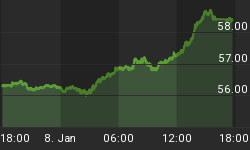Bigger, faster, better. That's the turbocharged investment we all want. Miller's Money Forever subscribers who pay close attention to our portfolio, though, will notice that we don't hold leveraged ETFs-those with "2x" or "inverse" or "ultra" in their names, which some investors mistake for "better."
Exchange-traded funds (ETFs) are a great tool for many portfolios. They allow investors to profit from movements in a huge variety of assets grouped by industry, geography, presence in a certain index, or other criteria. You can find ETFs tracking automobile producers, cotton futures, or cows.
For our purposes, ETFs make it easier to diversify within a certain group of companies-easier because you don't have to buy them individually. You buy the ETF and leave it to its managers to balance the portfolio when needed.
We have several ETFs in the Money Forever portfolio, and they have served us well so far. They expose us to several universes, such as international stocks, foreign dividend-paying companies, convertible securities, and others.
Why Turbocharged Isn't Always Better
So, if we think the underlying index or asset class will move in our favor, why wouldn't we opt for the turbocharged version-the versions that use leverage (credit) to achieve gains two times higher?
First, because we're very cautious about volatility, and leveraged ETFs are designed to be less stable than the underlying assets. Second, there is a trick to leveraged ETFs that can make your investment in them stink evenif the underlying index or asset does well.
Before we get to the details, let me pose two questions:
- If the S&P 500 goes up by 5% over several days, how much would a 2x leveraged ETF based on the index earn?
- If the S&P 500 goes up and down, then rises, and after a while ends up flat, will our ETF end up flat too?
If you answer 10% to the first question, you may be correct, and that's the caveat: you won't be correct 100% of the time. You can't just multiply an index's total gain by the ETF's factor to gauge how much you'll earn, because leveraged ETFs track daily gains, not total ones.
To show how that works, here's a brief example that will also answer question number two.

What you're looking at here is a hypothetical index with a value of 1,900 at the beginning of our period. It goes up and down for four days, and then is back to 1,900 by the end of day 4. There is also an ETF that starts with a price of $100 and doubles the daily gains of the index.
On the first day, the index goes down to 1,800 for a daily loss of 5.26%. This forces the daily loss of the ETF to be 10.53% (including rounding error), and the resulting price of the ETF is $89.47. The next day the index is up 3.89%, forcing the ETF to grow by 7.78%, to $96.43, and so on.
We designed this table to show that even though the underlying index is back to 1,900 in five days, returning 0% in total gain, the ETF is down 1.1% by the end of day 4.
It works like this because ETFs are designed to track daily returns, not mirror longer-term performance of the underlying index, and because of how cumulative returns work. If one share of the ETF costs $100 at the beginning of the period and the market dropped 5%, we should expect double the drop. Our share would now be worth $90. If the next day it reverses and goes up 5%, we should expect double the increase. We would be right in doing so, but our share would be worth $99 now, not $100-because it increased 10% above the $90 closing price the day before.
Leveraged ETFs Are for Traders, Not Investors
If a trader is smart and lucky, she or he would buy the ETF at the beginning of day 3 at $96.43, sell at $109.84, and realize a gain of 14%. But if one bought at day 0 and held until the end of our period, one would lose money even though the underlying index ended up flat.
In general, no one can predict where an ETF will end up because it's impossible to tell in advance what pattern the underlying index will follow. In practice, it means that an ETF only partially tracks the underlying index; its performance also depends on its own past results.
The ideal case for investing in an ETF (we assume it's long the market) would be to buy it at the beginning of a multi-day, uninterrupted uptrend. In that case, it would come very close to doubling the market's performance. But such winning streaks are impossible to forecast, and short-term trading like this is not our focus.
We don't recommend leveraged ETFs in our portfolio because they're geared for traders, and we take a longer-term perspective. We are investors.
The additional potential reward from a turbocharged ETF doesn't warrant the additional risk, particularly when you're investing retirement money. There are safer ways to maximize your retirement income. Learn more about our strategies for doing just that by signing up for Miller's Money Weekly, our free weekly e-letter that educates conservative investors about timely investment strategies. You'll receive ahead-of-the-curve financial insight and commentary right in your inbox every Thursday. Start building a rich retirement by signing up today.
The article Stop Investing in Leveraged ETFs was originally published at millersmoney.com
















